Cheyenne Mountain Zoo has welcomed a new red-necked wallaby to the mob! Australia Walkabout Lead Keeper, Bailey Jones, introduces us to the two-year-old male wallaby, P. Sherman, and provides an update on how introductions are going with CMZoo’s existing group of wallabies.
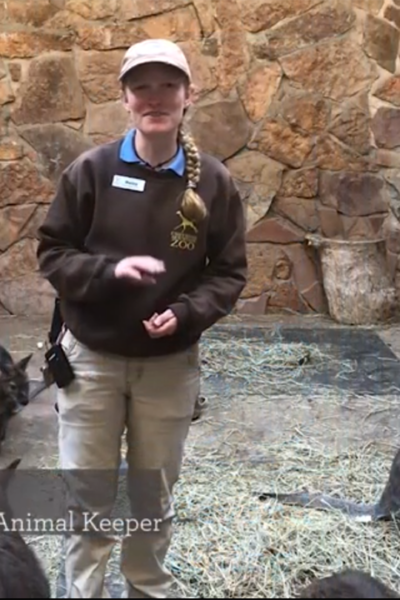

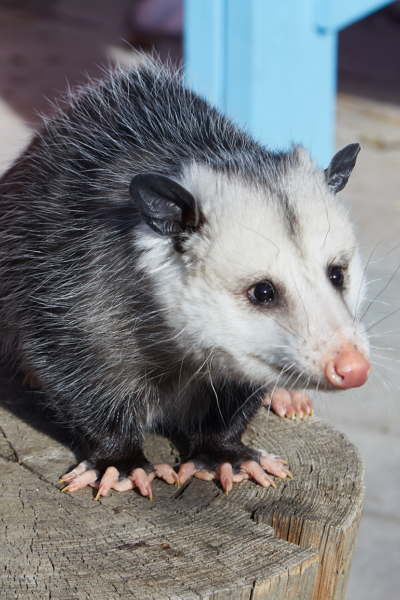

There’s a new fuzzy face in My Big Backyard: Hutch, the eight-month-old Virginia opossum! Opossums might get a bad rap, but they eat thousands of ticks in the wild, which can help prevent the spread of disease to other mammals, including humans.
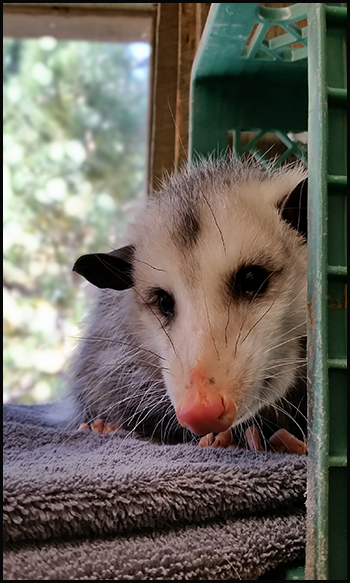
Opossums are important members of our ecosystem and can be found right here in Colorado’s wild places. Hutch lives in the window habitat between the turkey and chicken yards in My Big Backyard. He’s a nocturnal mammal who usually looks like a ball of fluff, as he sleeps through most of the day. His keepers often take him out to enjoy some fresh air or to do some training in The Loft. You might see him out and about during these times.
Hutch is quickly learning lots of new ways to interact with guests. He recently debuted as a ZOOMobile animal and brings smiles to guests outside of the Zoo.
If you want a chance to meet, touch, and help train with Hutch, you can schedule a special animal encounter with him. This is a guaranteed way to interact up close with this incredible guy.
Hutch is just one of many animals with which you can schedule special encounters. Maybe you have a love for raptors and meeting Hoosier, the barn owl, is on your bucket list. Are large aquatic mammals your favorite? Then Ginger the beaver would love to meet you! Perhaps reptiles are more your speed. If so, then a snake like Rustle, a bullsnake, or a lizard like Wasabi, a prehensile-tailed skink, can be your new animal best friends. Just visit https://www.cmzoo.org/encounter to find out about all the amazing animals ready to meet you!
Back to The Waterhole
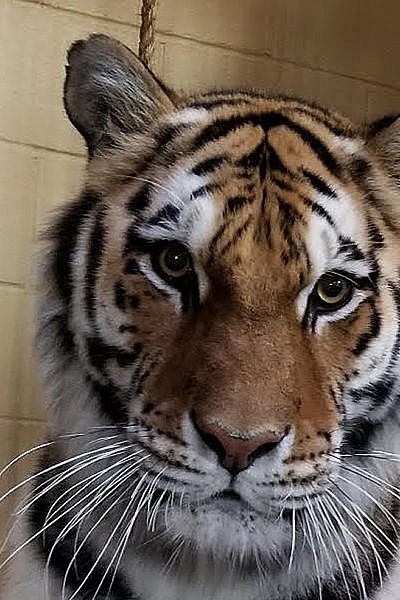

This month, a very special delivery arrived at our mountain Zoo: a female Amur tiger named Savelii (sah-VEL-ee).
Eight-year-old Savelii joins CMZoo from Bramble Park Zoo, in Watertown, South Dakota. In September, the plan was for nine-year-old CMZoo male Amur tiger, Thimbu, to move to Bramble Park Zoo. Since then, plans have changed, and Thimbu has a recommended breeding match. He will instead move to Rosamond Gifford Zoo, in Syracuse, New York, in the next few weeks. Through the Species Survival Plan’s (SSP) management of Amur tigers in accredited Zoos, CMZoo four-year-old male Amur tiger, Chewy, was selected as a breeding match for Savelii and will remain at CMZoo for the foreseeable future.
Wildcats Conservation Alliance estimates there are only approximately 500 Amur tigers in the wild. They’re listed as endangered by the International Union for Conservation of Nature (IUCN). If breeding is successful between Savelii and Chewy, they would both become first-time parents and add to the assurance population of tigers in human care.
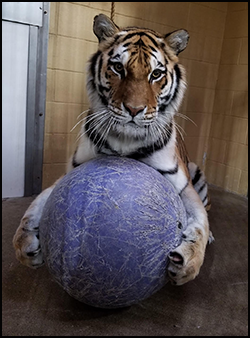
Savelii is about halfway through her routine quarantine period in the tiger building, behind the scenes. This time allows Savelii to adjust to her new surroundings and for Chewy to recognize her scent and presence, while Savelii clears exams and medical tests.
Savelii’s keepers at CMZoo say they’re optimistic about her, and she’s showing signs that she’s adjusting well. But, as with any new addition to the CMZoo family, there are a lot of milestones for her to reach before starting the introduction process with Chewy, like clearing quarantine, building trust with her keepers, getting familiar with her new exhibit and shifting areas, and training.
Savelii is already training with all of the Asian Highlands animal keepers, who are getting to know her personality.
“She likes to rub her face against the mesh, like a housecat does. She’s super ‘chuffy’ when we engage with her, which is a good sign,” Kristen Cox, Asian Highlands animal keeper said. (A ‘chuff’ is a quick outward breath, which is like an outgoing tiger greeting.) “She’s interested in Chewy’s presence. When we’re training with her and she hears Chewy or Thimbu chuffing or playing with enrichment in the dens nearby, she perks her ears up and turns her attention from us to listen to them.”
Savelii participated in training at her former zoo, which provided a strong foundation on which keepers are excited to build.
“We’re working on asking her to eat from tongs, which allows us to provide food rewards during training and helps her build trust with us. Next, we’ll ask her for a stand-up behavior, which allows us to get a good look at her feet and body to make sure everything looks healthy,” said Courtney Rogers, Asian Highlands keeper. “She’s great at the sitting and lying down training behaviors. Next, we plan to work on her voluntary injection training, which lets us provide vaccinations and other necessary medications in a low-stress way. She seems to be a quick learner so far.”
Savelii is smaller than Chewy, weighing in around 230 pounds compared to Chewy’s 360 pounds, which is a normal size difference between female and male tigers. She has beautiful almond-shaped eyes and a round face. Another way guests can distinguish Savelii from Chewy, when they visit the Zoo and see her on exhibit soon, is her shorter hair around her face and darker lines on her forehead.
When Savelii will be on exhibit for guests to see has not yet been determined. Chewy and Savelii will take turns accessing the yards and spaces separately. Sharing the same space at separate times allows them to become familiar with each other’s scents.
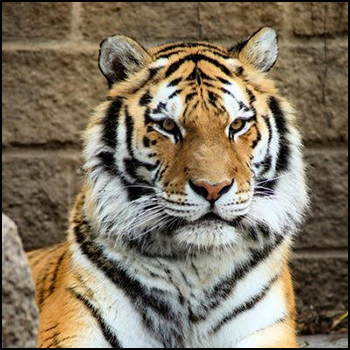
“The breeding recommendation is important and an ultimate goal, but we’re not going to rush into introducing them,” said Rogers. “We’ll pay attention to how confident they are with each other’s smells and how confident Savelii is getting with us, and we’ll go from there.”
During animal introductions, keepers follow the animals’ leads and observe behaviors that indicate that they’re comfortable and receptive with each other, or not. They start very cautiously by observing behaviors during ‘howdies,’ which are introductions with a barrier between the cats. ‘Howdies’ allow animals the opportunity to see, smell and investigate each other without the risk of potentially aggressive physical interactions.
“We prepare as much as possible, but we know from experience that big cats can be unpredictable, so we stay flexible during introductions,” said Rebecca Zwicker, Asian Highlands animal care manager. “We look for signs of interest or aggression between the cats during ‘howdies,’ and respond based on their interactions. That could mean we steadily increase the amount of access they have to each other. It could also mean we give them more time, but limit their access, to get used to each other.”
Having experienced a heartbreaking loss during a previous big cat breeding session, Cheyenne Mountain Zoo is fully aware of the dangerous scenarios it presents. CMZoo Amur tiger, Zoya, was killed by her mate in one such breeding session in 2016.
Since then, Cheyenne Mountain Zoo has not participated in tiger breeding. Now, as wild populations decline and the SSP’s past three years of efforts to breed Amur tigers prove unsuccessful, CMZoo has accepted the SSP’s recommendation to try again.
Although big cat breeding has proven to be risky, Cheyenne Mountain Zoo animal care and veterinary staff take all precautions possible. Ultimately, CMZoo acknowledges that the work to continue the existence of these species is so necessary that we want to try.
“Savelii and Chewy have valuable genes that will help ensure the genetic diversity of Amur tiger assurance populations in zoos, so we’re looking at lots of options about the best ways to get her and Chewy’s genes in the population,” said Rogers.
Many ask if artificial insemination (AI) is a better option for riskier breeding scenarios, like these. It can be a last-resort option, but isn’t historically successful with tigers because of the females’ unique ovulation patterns.
Female tigers are induced ovulators, which means the act of mating causes the female to release an egg for fertilization. It can take several days of mating interactions to stimulate ovulation and guarantee fertilization of the egg. Because of this, AI success in tigers has historically been very low; only three out of 60 procedures in the last 20 years have resulted in a cub. Even with the odds stacked against AI, CMZoo has collected samples from Chewy in case this last resort needs to be explored.
“For now, we’re focused on setting Savelii up for success,” said Rogers. “We see her confidence building and look forward to sharing her with everyone as soon as she’s ready.”
As Savelii makes progress at CMZoo, we will keep guests posted on social media and through The Waterhole monthly newsletter.
Back to The Waterhole
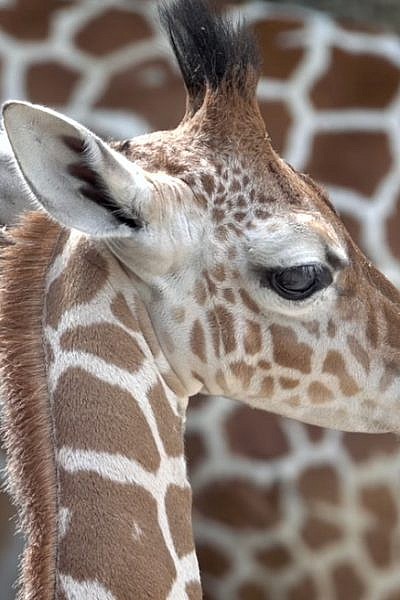

On Monday, Sept. 23, CMZoo giraffe lovers said a heartfelt goodbye to two-year-old Rae, a reticulated giraffe who moved from CMZoo to Lincoln Park Zoo, in Chicago, Ill. That same day, two-year-old female reticulated giraffe, Panya, joined the CMZoo herd from Memphis Zoo, on a breeding recommendation from the Association of Zoos and Aquariums (AZA) Species Survival Plan (SSP).
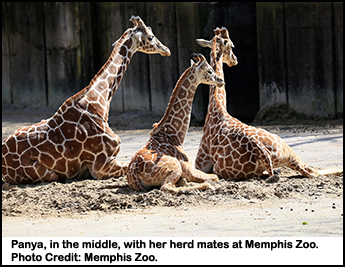
“We were pleasantly surprised because about 20 minutes after she came into the barn from her transport, she took food from us,” said Rachael Hahn, African Rift Valley animal keeper. “That’s not something we anticipated, but she took a few pieces of elm browse and some lettuce right away. That was a really exciting indication that it could be a smooth transition for her into her new home and herd.”
The name ‘Panya’ comes from the Swahili word for ‘mouse.’ Memphis Zoo keepers tell CMZoo that Panya was the one of the smallest calves they have ever seen, weighing in at just about 95 pounds at birth.
With tips from giraffe keepers, when visitors can meet Panya they should quickly be able to identify her. The first clue is her stature.
“She is adorable and really tiny. She’s even smaller than Rae,” said Amy Schilz, senior lead animal keeper in African Rift Valley. “Fans should be able to easily identify her in the herd, because she has a fuzzy young-giraffe coat, short legs and a tall body, like [29-year-old female CMZoo giraffe] Riyadh and spot patterns similar to Mahali [16-year-old male CMZoo giraffe], with lots of white splotches in her spots. She also has really long tail hair, for now, since the rest of the giraffe herd haven’t ‘styled’ it yet.”
Panya’s keepers at Memphis Zoo describe her demeanor as, “a mixture of personality. She can be very timid at times, but also has a curious side, often watching intently as her keepers work in nearby stalls. She is sassy and full of attitude, as well.”
CMZoo giraffe keepers have observed Panya getting excited and spreading her feet to play a little bit, which may be interpreted as a sign of nervousness, so keepers are taking the introduction to the herd slowly and carefully.
“She’s doing really well, getting to know us and the herd while she completes her quarantine period in the barn,” said Hahn. “She can see and smell all of the other giraffe from her current space, and [17-year-old] Msichana, one of our female giraffe, is spending some time with her. Msichana historically has been a good companion, so we chose her to help Panya settle in. Female giraffe are herd animals, and usually prefer to have a buddy.”
Quarantine periods last about a month. Msichana and Panya are sharing a space for about 30 minutes at a time, for now. Keepers will work to increase that time together over the coming days.
“We’re following her lead, like we do with all of our animals, so we’re moving at her pace,” said Hahn. “She’s telling us that a new place, new keepers and a new herd are enough for now. We wanted to give her a little more time to settle in, which we know our giraffe fans will understand.”
“The SSP looks at the genetics of all giraffe in AZA-accredited zoos, and Panya is a great match for our breeding bull, Khalid,” said Schilz. “Hopefully she’ll join our herd as a breeding member and will someday have a calf of her own. We’re really excited for her to be a part of our herd, and for everyone to meet her.”
Guests can already come and see Panya in her quarantine area of the giraffe barn. Stay tuned to CMZoo’s social media channels to learn when visitors can come and meet Panya with the rest of the herd, in African Rift Valley at Cheyenne Mountain Zoo.
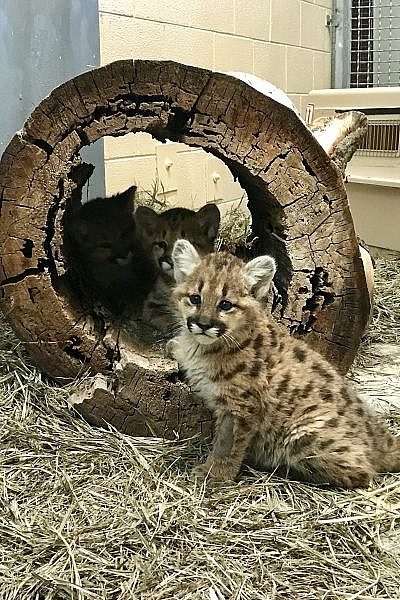

– GUESTS SHOULD SOON SEE CUBS AND KAYA IN ROCKY MOUNTAIN WILD –
The three mountain lion cubs who were orphaned in Washington in late May are growing, playing and getting settled in their new home with their new “grandma” Kaya, 13-year-old CMZoo mountain lion.
Kaya came to CMZoo in 2006, from Wyoming, with her three brothers. The four cubs were unfortunately also orphaned thirteen years ago. Kaya’s brothers, Yuma, Motega and Tocho, have since passed due to age-related issues. While CMZoo keepers and veterinary staff work through age-related health issues with Kaya, who is blind and arthritic, they’re hopeful the new cubs (which we also call kittens, because they’re still only 10 weeks old) quickly acclimate to their new home in Rocky Mountain Wild.
Rocky Mountain Wild Senior Lead Keeper, Rebecca Zwicker, shares the latest update on the cubs, Kaya’s health, and when she hopes guests can see these adorable new CMZoo residents.


— Six-week-old cubs will be visible to guests in the coming weeks —
COLORADO SPRINGS, Colo. (May 28, 2019) – Three adorable six-week-old mountain lion cubs are on their way to Cheyenne Mountain Zoo today, after being orphaned in Washington state. The two sisters and their brother, who still bear the camouflaging spots of young cubs, were found in their den last week.
Washington Department of Fish and Wildlife (WDFW) responded to a human-wildlife conflict that resulted in the cubs’ mother’s death. Rich Beausoleil, statewide Bear & Cougar Specialist with WDFW, worked with Michelle Schireman, Species Survival Plan (SSP) coordinator, to find a home for the young lions, who wouldn’t survive on their own in the wild.
“We’re excited to provide a home for these young, playful cubs,” said Rebecca Zwicker, senior lead keeper in Rocky Mountain Wild, where the cubs will live. “Of course, these situations are bittersweet. We wish we didn’t have to find homes for orphaned cubs, but we’re grateful for our partnerships with the SSP and WDFW, because we can offer the cubs an amazing life of choices, care, and compassion.”
This is the second litter of orphaned mountain lion cubs that Cheyenne Mountain Zoo has been able to help rescue. The first litter came from Wyoming in 2006. Tocho, Motega and Yuma were all male members of the litter who have since passed. Kaya, the female mountain lion who lives in Rocky Mountain Wild, is the remaining member of the original CMZoo litter. After the cubs earn a clean bill of health in the next few weeks, the plan is to introduce them to Kaya.
“Motega and Tocho both passed in the last four months, so we’re hoping Kaya, who is blind and aging, will enjoy having company again,” Zwicker said. “We’ll take our time letting Kaya and the cubs have opportunities to interact from a safe distance, and then we’ll follow their lead. It would be ideal if they could live together, because the cubs can learn how to be mountain lions from Kaya.”
While the cubs are in quarantine, they’ll receive vaccinations and veterinary checks to ensure they’re ready to explore their new home in Rocky Mountain Wild.
“Mountain lions are part of our daily lives in Colorado,” said Zwicker. “These cubs will be ambassadors for their wild relatives, helping our guests learn about their species, their unique personalities and behaviors, their contributions to our ecosystem, and how we can live peacefully with them.”
Cheyenne Mountain Zoo’s new arrivals will be viewable to guests in the coming weeks. Follow the cubs’ story by tuning into Cheyenne Mountain Zoo’s Facebook, YouTube, Instagram and Twitter accounts, where the Zoo will share milestone updates and general adorableness from the cubs.
About Cheyenne Mountain Zoo
Cheyenne Mountain Zoological Society was founded in 1926. Today, Cheyenne Mountain Zoo, America’s only mountain zoo, offers comprehensive education programs, exciting conservation efforts and truly fantastic animal experiences. It is Cheyenne Mountain Zoo’s hope that guests fall in love with animals and nature, and take action to protect them. Of the 233 zoos and aquariums accredited by the Association of Zoos and Aquariums (AZA), Cheyenne Mountain Zoo is one of just a few operating without tax support. Cheyenne Mountain Zoo depends on admissions, membership dues, special event attendance and donations for funding.
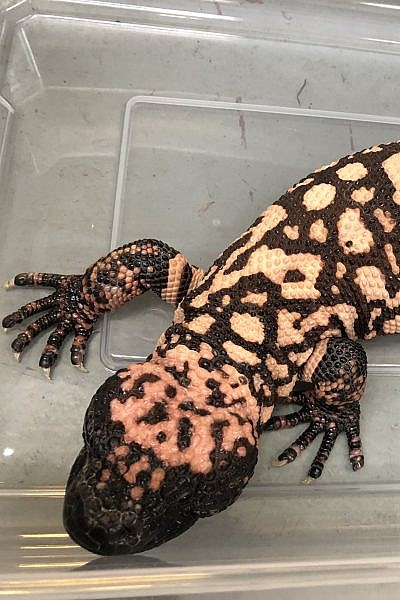

Scutes Family Gallery will soon welcome two new residents: Mike and Sully.
As venomous lizards, the two male Gila monsters require special handling. In this video, learn how to identify Mike from Sully, their interesting adaptations, and how you can help protect this near-endangered species.
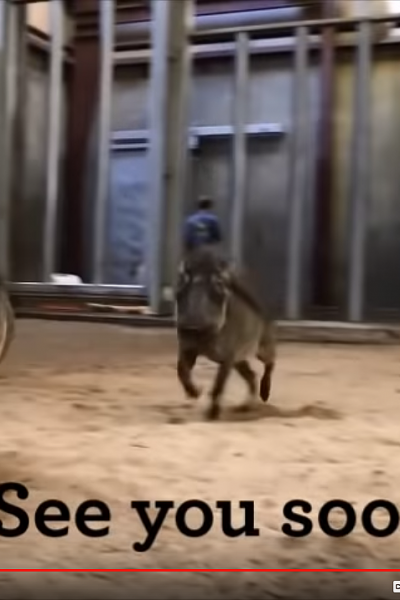

As we prepare for the opening of Water’s Edge: Africa later this summer, we’re excited to introduce the future exhibit’s newest residents, Penelope and Alexander, eight-month-old common warthogs.
Have you ever seen a warthog do “zoomies”? Click below to learn about these two rambunctious siblings who will live alongside our hippos, and perhaps even venture outside to meet our guests face-to-snout!
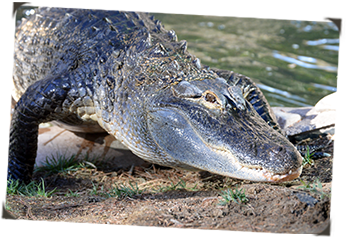

Animal Encounter
Cheyenne Mountain Zoo is home to two male American alligators, Tommy and Tori, who live in Australia Walkabout. Both boys came to CMZoo as hatchlings, beginning with Tori nearly a decade ago. It may come as a surprise to some who are unfamiliar with their species, but alligators are intelligent.
In a new training area in the indoor section of the alligator exhibit, Tommy is learning to come out of the water onto a sandy area and line up alongside a set of wooden barrier poles. Tommy sits on one side of the poles and the keepers interact with him from the other side, performing routine checks on his feet and scales among other things. Keepers will eventually work up to getting voluntary blood draws from Tommy, which will help them monitor his health beyond visual check-ups.
“We set up the area so he has ultimate control,” said Bruce Dunbar, alligator keeper at Cheyenne Mountain Zoo. “If he doesn’t want to be up here with us, he can just go right back into the water. When we tell people about this work we’re doing, most people say, ‘I didn’t think you could train an alligator!’ but it’s all about finding the right motivation that allows them to succeed. They’re very intelligent, which most people don’t assume about alligators.”
Tommy and Tori have previously excelled at station training, which involves them touching their snouts to different colored paddles presented by the keepers. The ‘gators are able to differentiate between the different colors, and they receive a food reward when they choose correctly. That allows keepers to separate them within the same area during feeding time or for individual check-ups.
Tommy is seven years old and about nine feet long, and Tori is nine years old and about ten feet long. While we haven’t had a need to weigh Tommy or Tori, the average adult American alligator weighs about 300 pounds, making it the largest native reptile in North America. American alligators are naturally found in slow-moving fresh water rivers and lakes in the southeast United States and along the Gulf of Mexico coast.

Both Tommy and Tori are very curious, which makes them great students in addition to their intelligence. Contrary to the common misconception that alligators are aggressive, Dunbar says they’re actually a little skittish.
“One day, I was carrying a large cardboard box past Tommy and Tori’s exhibit area, where they were out basking in the sun. I walked by with this big, unusual object, and it kind of startled them. I’ve never seen them move so quickly,” Dunbar said. “They got into the water as fast as they could. Water splashed everywhere; tails were whipping. They’re nervous and aware of everything around them. They’re pretty passive animals when it comes to neutral interactions. For the most part, they want to be left alone.”
Zoo visitors often ask how to tell them apart. Tori is larger and has a wider head than Tommy, and Tommy has more yellow markings on his sides. As alligators age, they start to turn grey. Tommy is two years younger than Tori, so he will probably lose his yellow coloration in the next few years. Their yellow camouflage makes them look like sunlight filtering through the water, which helps them hide from predators and prey, like fish and wading birds, or other alligators in the water.
On warmer winter days, when outdoor temperatures reach the fifties and sixties, there’s a good chance you can see Tommy participating in his new training, which is inside. Because alligators’ digestive systems slow down during cooler seasons, they don’t eat (sometimes for up to a month). During those extended cooler periods, they don’t participate in training because they wouldn’t receive the food rewards that motivate their behaviors. Dunbar says on colder days, the alligators are most active between 10 a.m. and noon, when they’re out basking and soaking up the sun before they return to their heated pond for the rest of the day
You can learn more about Tommy, Tori and their relatives in the wild at Cheyenne Mountain Zoo gator keeper talks every day at 11 a.m. in Australia Walkabout.